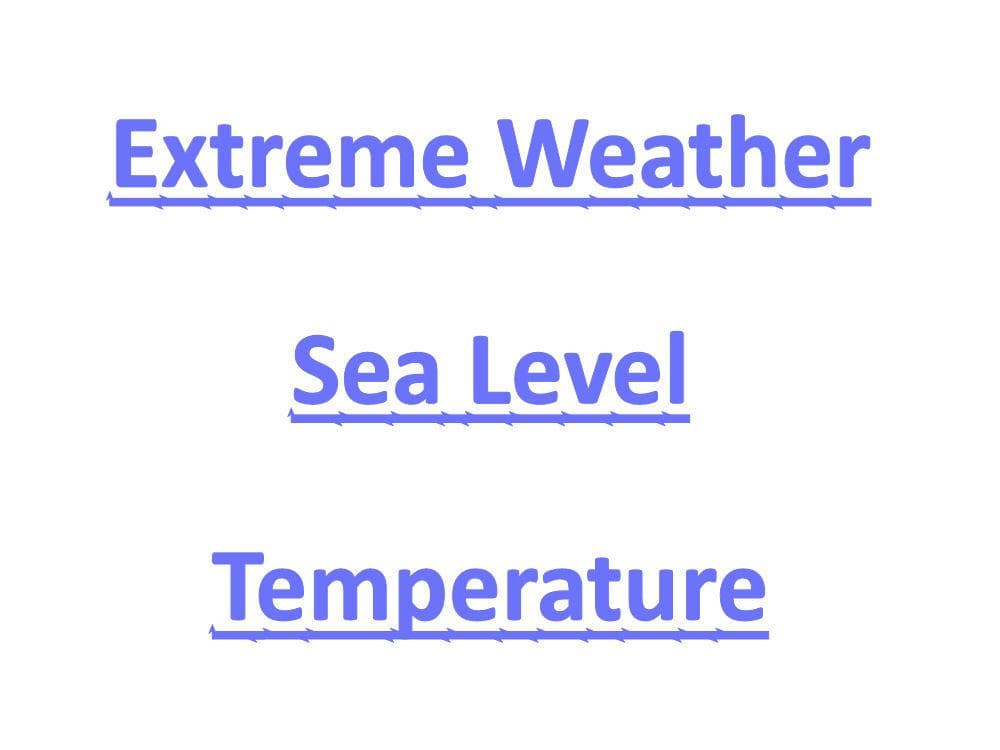“Signal-to-noise ratio (abbreviated SNR or S/N) is a measure used in science and engineering that compares the level of a desired signal to the level of background noise.”, everything.explained.today
Previous commentaries (here, here, and here) have dealt with the signal to “noise” ratio of the primary climate change signals: temperature, sea level and extreme weather. The temperature signal has a significant natural noise component as well as a significant noise component resulting from “adjustment” of the temperature data. The sea level signal has a significant noise component, primarily because the surface of the global oceans is constantly disturbed by the effects of wind, tides and storms. The noise associated with extreme weather is largely the result of the episodic nature of extreme weather events which makes signal detection problematic.
The outputs of the climate models are frequently treated as signals. However, they are actually noise. Each of the many models produces varying outputs depending on the inputs used in each model run, so no individual model produces a signal. Each of the climate models produces different results, even when provided with the same inputs, so the ensemble of models does not produce a signal. This is the result of several factors, including the fact that none of the models have been verified and none have demonstrated predictive capability. The model outputs also vary because of the noise introduced by the ranges of values of the various inputs to the models.
Discussions of “tipping points” are noise, because the conditions required to trigger a “tipping point” are undefined and currently incapable of being defined. This is not to suggest that there is no such thing as a “tipping point’, as illustrated by the major cycles identified in paleoclimatic history. Something caused the earth to descend into the various ice ages; and, something caused the earth to recover from these ice ages. These triggers can be referred to as “tipping points”, though we do not understand what constituted the “tipping point”. In more recent history, we do not know what triggered the Little Ice Age or caused it to end. Politicians frequently warn about future possible “tipping points” being reached but are incapable of identifying the necessary conditions.
Projections of potential future events based on the climate models are also noise, because the outputs of the models are noise. Predictions of permanent droughts, excessive precipitation, stronger or more frequent storms, island submergence, crop failures, the end of snow and the emergence of an ice-free Arctic are noise in the absence of any clear underlying signal.
Efforts to attribute differences between storm frequency and intensity over time to climate change using attribution models are noise, because the models are unverified; and, the various attribution studies estimate very different climate change impacts on the storms studied.
Strident statements regarding the time remaining for precipitous action before a “tipping point” is reached and descriptions of current climate change as a crisis, or an existential threat, are also noise in the absence of a climate signal.
Arguably, the reports of the IPCC working groups, while noisy, are far less noisy that the IPCC Summary for Policymakers. The working group reports are intended to inform, though the information they present is not comprehensive or totally objective. The Summary for Policymakers is intended to influence its audience to incite action, yet another form of “noise”.
